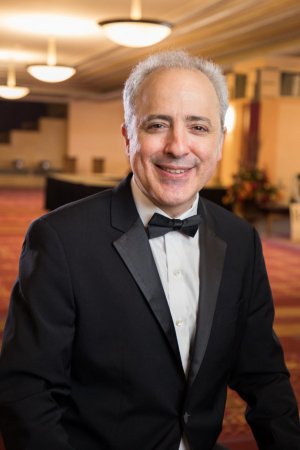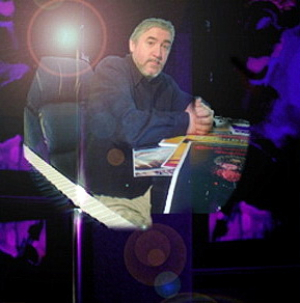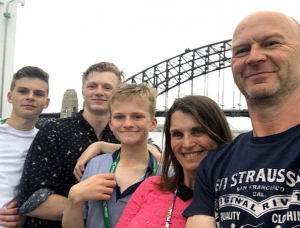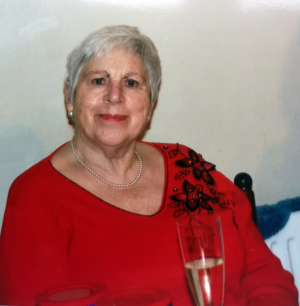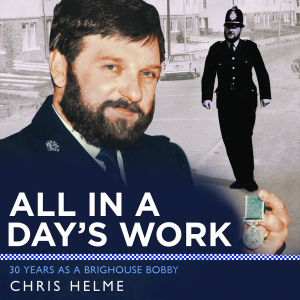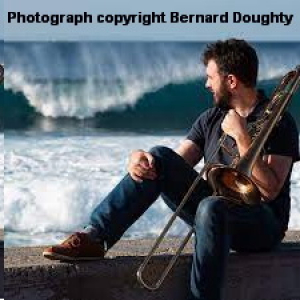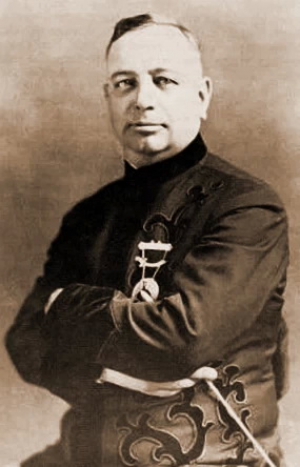
Talk Subjects
Chris Helme
Acclaimed as one of the most formidable and reputable conductors in the world of brass bands, Michael J. Garasi has been the Principal Conductor of the internationally acclaimed Brass Band of Battle Creek since 2013. Having conducted the Brass Band of Battle Creek at the Midwest Clinic in 2017, Mr. Garasi and the band are returning by special invitation, to perform for the 75th Midwest Clinic in 2021.
Under the direction of Mr. Garasi, the BBBC has produced recordings, performed numerous concerts, conducted youth programs, children’s concerts and clinics throughout the state of Michigan. His outstanding leadership in progressive and creative conducting and teaching techniques and methods during the year of the pandemic, and due to his passion in continuing Brass Banding throughout the world, he was nominated for the Honour of “Conductor of the Year,” in 2020, by 4Barsrest.com.
After serving as Visiting Assistant Professor of Instrumental Music, in 2020-2021, Mr. Garasi has accepted the position of Director of Bands and Associate Professor of Instrumental Music at the University of Mary-Hardin Baylor in Belton, Texas.
He was the Musical Director of the innovative, and award-winning, Brass Band of Central Florida for nine years and became the first American brass band conductor ever to be nominated by 4barsrest.com for the “Newcomer of the Year” Award in 2004 and the “Conductor of the Year” award in 2006. He also won the “Best New Arrangement” Award in the U.S. Open Brass Band Championships in 2004 and 2005.
In 2007, he became the first American conductor to adjudicate at the most prestigious entertainment competition for brass bands in the world, the Brass in Concert Competition at the Sage in Gateshead, here in the UK. Through this international success, he was invited to England twice to conduct the world famous Grimethorpe Colliery Band at numerous concerts and at the Brass in Concert Competition in 2008. Ten years later he was also invited to adjudicate the SIDDIS Brass Band competition in Bergen, Norway.
In 2016, Mr. Garasi conducted the American Philharmonic Orchestra in a new video recording project called “Virtual Symphony” for Royal Caribbean Cruise Line’s Anthem of the Seas. The American Philharmonic Orchestra was comprised of musicians from the National Symphony Orchestra, Baltimore Symphony Orchestra and Military Bands in Washington DC. This video project was created for the exclusive performance experience offered only on the Anthem of the Seas in their 270 Degree state-of-the-art performance venue.
A committed advocate for the performance of new music, Mr. Garasi has conducted in Texas’ Rice University’s Shepherd School of Music’s annual Contemporary Music Festival, conducting Bernard Rand’s Oboe Concertino featuring oboe professor, Robert Atherholt. During the 2011-2012 season, Mr. Garasi was invited to conduct the premiere season of the professional New Score Chamber Orchestra, performing the music of living composers of our day. He was also a part of the 1st “Young Composers Challenge” annual event, sponsored by the Orlando Philharmonic.
With a gift for understanding, motivating and conducting youth ensembles, Mr. Garasi has spent decades investing in the lives of young musicians. For five years, Mr. Garasi was Director of Bands at the prestigious North Broward Preparatory Boarding School in Coconut Creek, Florida. Prior to this, he. was a full-time faculty member of the School of Performing Arts at the University of Central Florida. At UCF, he was on the instrumental conducting faculty conducting the symphony orchestra, wind ensemble, chamber orchestra for the musicals in collaboration with UCF Theatre, and taught numerous undergraduate and graduate courses.
Mr. Garasi has held positions as the Artistic Director/Conductor of the Brevard Symphony Youth Orchestra, the Conductor of the Florida Symphony Youth Orchestra’s Philharmonia, and has been actively involved in public and private school music education conducting bands and orchestras in Florida, Texas, Michigan, Arkansas, New York, Indiana and New Mexico.
Her studied at the Eastman School of Music and holds degrees from the prestigious Cleveland Institute of Music. In addition to his formal degrees, Mr. Garasi has studied conducting with Kenneth Kiesler at the Conductors Retreat at Medomak, Michigan, Michael Jinbo at the Pierre Monteux School, Maine for Conductors, attended masterclasses with Pierre Boulez at Carnegie Hall.
On this week's show we are featuring Michael Garasi conducting the Brass Band of Central Florida and his arrangement of Tis' a Gift from the Aaron Copland composition..
James Hosay (b: 1958) is a native of Nashville, Tennessee, in the US. While growing up in Norfolk, he studied trumpet and music theory in public school and with private instructors. Aged 13 he began writing arrangements for his school band, and wrote his first original composition two years later.
After graduating from high school, he joined the military as a trumpet player, and attended the US Armed Forces School of Music. He developed his composition and orchestration skills while serving as a music copyist for the US Army Band (Pershing's Own), in Washington, DC, taking advantage of the opportunity to study the techniques used by top quality arrangers.
He has spent most of his life in his adopted state of VirginiaI and spent half of his life dreaming of being a professional composer, and the other half living the dream. Whether he was writing a piece for a junior band or for a full Orchestra, he has the same passion and efforts for all his musical creations and has the same level of enjoyment out of it. He loves ALL styles and genres of music, and this is reflected in the music he writes. You will hear a wide range of influences in all his music.
In 1991, he obtained his current position of Arranger/Composer for the US Army Band, competing against a large field of civilian and military writers.
On his website James makes this observation - " The human heart beats to a rhythm, the brain sends electronic impulses throughout the body - everything moving in perfect synchronization, like a beautifully performed piece of music. Melody and harmony are reflective of the human spirit - our emotional ups and downs, and our interactions with others. Good music captures both the physical and spiritual essence of our existence. I hope that the music you find here will move your spirit and take you to a peaceful place ".
He writes music for concert band and brass band exclusively for publication by Curnow Music Press.
Fanfare Britannica written by James opens our show this week. As with all pieces of music there is always a back story - The piece was written and published in 2001.
Thanks to James responding to my email enquiry about his composition he says "The sights and sounds of historic London were the inspiration for this regal and stately fanfare-opener. A bold and majestic fanfare leads into an English style processional. Frequent but simple meter changes help make this piece interesting as well as educational". I had taken a trip to London in 1998, and that trip served as the basis for the piece.
At the age of 52, looking back eight years, I was possibly more emotionally prepared than most to make a move to the other side of the world.
Light Music is a much maligned area of popular music, difficult to classify and frequently hard to find in the record catalogues or on modern radio stations. Yet for some 30 years this was the music that filled the media, at the cinema, on record and over the airwaves - indeed, the BBC had an entire radio station named after it.
Clive Richardson (1908 - 1998) was the last of the pioneers of light music. He was born in Paris of English parents, studied at the RAM. He composed mostly for orchestra, though his works included a number of songs, film music, 'the hymn of praise' Salute to Industry, for chorus and orchestra and an instrumental piece. 'Three Flemish Folk Tunes' for two harps and oboe, with the musical Goossens family in mind. Especially remembered for his relaxed short orchestral genre piece 'Beachcomber' (1949) and the 'London Fantasia' for piano and orchestra, a depiction of the Battle of Britain, but also worthy of mention are Continental Galop, White Cliffs, Running of th Rails. Most notably two signature tunes 'Melody on the Move' and the one featured on our show this week 'Tom Marches On', the ITMA march, just one of many contributions to that programme by him.
He was educated at Harrow School and despite showing prodigious talent in matters musical from an early age began training to become a doctor. Wisely switching to music, he enrolled at the Royal Academy of Music, where he studied a variety of instruments, including piano, and took conducting tuition from Sir Henry Wood and composition with Norman O'Neil. He swiftly achieved his LRAM and ultimately became a fully fledged Associate (ARAM) which remained a source of great pride to him.
In 1937, he joined the Gaumont British Film Company at Lime Grove, and under the musical director Louis Levy he composed and orchestrated sections of some 100 films, in collaboration with such future greats of the light- music world as Charles ('Dick Barton') Williams, Jack ('Picture Parade') Beaver and Hubert ('Cornish Rhapsody') Bath. Seldom was a complete score composed by one person and invariably Levy took sole screen credit.
He was also involved in numerous Jack Hulbert and Will Hay comedies and may well have had a hand in Hitchcock's 'The Lady Vanishes' (1933) and Nicholas Brodszky's score for 'French Without Tears' (1939).
At the outbreak of war he immediately ceased all musical activities. Already an officer in the Territorial Reserve, he was posted to a succession of Ack-Ack Battalions and served in Coventry, Manchester and Birmingham. His experiences of the bombing in these cities and both the horrors and courage that he witnessed were the inspiration for his 'London Fantasia', a short concert work in the spirit of Richard Addinsell's 'Warsaw Concerto' (Dangerous Moonlight, 1941), and it proved to be Richardson's first popular hit (the recording with the composer at the piano accompanied by the Columbia Light Symphony orchestra conducted by Charles Williams was a best seller in 1945/46).
Also around this time he teamed up with fellow pianist Tony Lowry (former arranger with Henry Hall's dance band) to form the duo 'Lowry and Richardson - Four Hands in Harmony', an unexpectedly successful turn that toured the still-flourishing variety circuits. They made several film appearances including 'My Ain Folk' (1944) and later a series of Rank fillers, 'For Your Entertainment' (1952) featuring a performance in what must have been the tiniest studio on the lot. Two grand pianos and a troupe of dancing girls alarmingly fill the screen almost to bursting point.
The immediate post-war period saw Richardson at his most productive. In addition to the performing he was invited to work on the ITMA (It's That Man Again) radio series which featured a weekly orchestral interlude, performed by the Variety Orchestra conducted by Charles Shadwell. Uncopyrighted popular melodies, folk songs and nursery rhymes were the order of the day, and Richardson's inventive and lively new interpretations proved to be a great success. Rediscovered a few years ago in the BBC vaults, many of them were freshly recorded by the BBC Concert Orchestra and played as the centrepiece to the recent nostalgia series 'Legends of Light Music'; they stand up well to this day.
Meanwhile, in the music- publishing world, several major companies began recording works on their own labels, to provide pre-packaged music to the film, radio and soon- to-be television industries. Chappell, Francis Day and Hunter and Boosey and Hawkes began commissioning mood music compositions from Richardson. The post-war boom in light music had begun.
Among dozens of gems a handful of classics are still fondly remembered by music enthusiasts of a certain age. 'Holiday Spirit', for example, composed for the Chappell's library became the theme of BBC television's Childrens Newsreel, 'Tom Marches On' (for Paxton publishers) was the closing march in ITMA. 'The Shadow Waltz' (by a pseudonymous 'Paul Dubois') became the theme to the Francis Durbridge television series, remade as the feature film 'Portrait of Alison' (1954), while 'Melody on the Move' gave its title and theme song to a long-running music radio series of the 1940s.
Continuing to write into the 1960s and 1970s he freely acknowledged that the call for music in his style was limited in an era of pop, and he was delighted when the Chandos library recently commissioned him to compose material for a new nostalgia CD.
In l988 he received a token of recognition from his peers when the British Association of Songwriters Composers and Authors awarded him their Gold Medal for services to the world of music, a belated acknowledgement of his exceptional work in the field of light music.
Notes courtesy of Philip L. Scowcroft from his 'British Light Music' book)and other sources.
Gilbert Tinner was born in 1965 in St. Gallen in Switzerland. He received his first lessons very young on trombone and piano. His musical studies took him to the Swiss Jazz School Bern where he graduated with excellent results in four disciplines: trombone, piano, composition and arrangement. Along with his activities of a freelance musician, he devoted himself mainly to the composition and the arrangement. Thanks to his many musical creations for various TV and radio productions,
Gilbert Tinner has become a composer-arrangers of light music most requested, especially by the Brass Bands. Despite a busy schedule, he does not neglect the direction of instrumental ensembles including the Orchestra of Harmony of the Swiss National Railway. Gilbert Tinner is trombonist and leader of the Swiss Army Gala Band. He was also appointed assistant conductor and arranger of Big Band of the Swiss Army.
His composition Brass Machine is on this week's show.
Memories are slippery things, you hold some firm while others escape, re-emerge and change shape. All you can do is grab onto the ones still in the tank and be thankful for them. At the age of 84 looking back to the beginning is a formidable task but like my old filing cabinet, the papers stuck firmly at the back remain while the recent ones fall out for lack of space.
It was six years ago when I was commissioned to write a new book based on the lighter side of my 30 years in the police. With most of that time spent working in and around Brighouse.
Just over two-years ago I was starting to wonder if I could turn the book into an audio book. After twelve months of part-time rercording at The Studio a professsional recording studio near Barnsley it was 95% finished but then came Covid 19 and the various lockdowns. I am pleased to now announce that the audio book 'All in a Day's Work' is finally finished. Here is a taster with the Introduction and Chapter One. Click this link: https://www.mixcloud.com/ChrisHelme/all-in-a-days-work-introduction-and-chapter-1/
Josiah Walters comes from Carnoustie, Scotland and started his musical career at the age of nine. He joined the Arbroath Instrumental Band and played throughout his school years.
He moved to Glasgow to study at the Royal Conservatoire of Scotland in 2011, with the support of a bursary from the Tayside Symphony Orchestra.
He graduated in 2016 and has worked ever since as a freelance professional bass trombonist.
In 2019, he studied for a year at the Koninklijk Conservatorium den Haag, The Netherlands. He has worked as a professional performer with a number of ensembles. He has also worked as a soloist and performed works with the RSNO, the BBC Concert Orchestra, and The Cory Band.
He began composing in his teenage years with support and guidance from Angus Council music staff.
In 2014, he produced the test piece for the European Brass Band Championships B Section, held in Perth. This test piece is featured on this week's show.
Zoltán Kodaly; b:16.12.1882 – d: 6.03.1967) was a Hungarian composer, ethnomusicologist (someone who studies the music of the world), pedagogue (teacher), linguist, and philosopher. He is well known internationally as the creator of the Kodaly method of music education.
Born in Kecskemet, Hungary, he learned to play the violin as a child.
In 1905, he visited remote villages to collect songs and recording them on phonograph cylinders. In 1906, he wrote a thesis on Hungarian folk song, ‘Strophic Construction in Hungarian Folksong’. At around this time he met fellow composer and compatriot Béla Bartok, whom he took under his wing and introduced to some of the methods involved in folk song collecting. The two became lifelong friends and champions of each other's music.
Partly because of the World War One and subsequent major geopolitical changes in the region, and partly because of a naturally rather shy temperament in youth, he had no major success until 1923.
His first wife was Emma Gruber died. In December 1959, Kodaly then married his 19-year-old student at the Franz Liszt Academy of Music with whom he lived happily with until his death in 1967, at the age of 84 in Budapest.
In 1966, he toured the US and gave a special lecture at Stanford University, where some of his music was performed in his presence.
Throughout his adult life, Kodály was very interested in the problems of many types of music education, and he wrote a large amount of material on teaching methods as well as composing plenty of music intended for children's use. Beginning in 1935, along with his colleague Jenő Ádám (14 years his junior), he embarked on a long-term project to reform music teaching in Hungary's lower and middle schools. His work resulted in the publication of several highly influential books.
The Hungarian music education program that developed in the 1940s became the basis for the Kodály Method. Although Kodály himself did not write down a comprehensive method, he did establish a set of principles to follow in music education, and these principles were widely taken up by teachers (above all in Hungary, but also in many other countries) after World War II.
The city of Pécs commissioned a full-length bronze statue, located in Szent István square, in his honour in 1976. According to the wishes of the sculptor, the work stands with its back to the Cathedral and facing a former playground, so that it was facing children, whose musical education was the most important thing in Kodaly’s life. He is depicted as a fragile old man walking amongst the horse-chestnut trees.
At one point during the Hungarian Revolution of 1956, the Workers Councils decide they should form the government with Kodály as president "because of his great national and international reputation.
On this week’s show we have music from his Háry János is a Hungarian folk opera which has been arranged for brass bands by Ray Farr.
Henry Fillmore (b:3.12.1881 – d:7.12.1956) was an American musician, composer, publisher, and bandleader best known for his many marches and screamers.
He was born in Cincinnati, Ohio, as the eldest of five children. In his youth he mastered piano, guitar, violin, flute, and slide trombone. He kept his trombone activities a secret at first, as his religious father —a composer of gospel songs, believed it an uncouth and sinful instrument.
Henry's mother secretly bought a used trombone for him. Henry entered the Cincinnati Conservatory of Music in 1901.
After graduating he travelled the United States as a circus bandmaster with his wife, an exotic vaudeville dancer named Mabel May Jones. They were married in St. Louis.
He gained fame as the ‘Father of the Trombone Smear’, writing a series of 15 novelty tunes featuring trombone smears called ‘The Trombone Family’. A number of these have a strong ragtime influence. The tunes have subtitles printed on the parts, some of which reflect social and racial realities of the time. Many were advertised specifically to denigrate black.
Fillmore wrote over 250 pieces and arranged orchestrations for hundreds more. We are featuring one of his trombone family solos on this week’s show.
Talks Available
All the presentations are timed to last up to an hour except where shown - questions are gladly taken after the presentation. All have been presented to male, female and mixed audiences of varying age groups.
-
A Postcard from the Past
The Sunny Vale Pleasure Gardens, Halifax - Yorkshire’s Alton Towers of the…
-
All in a Days Work
Reminiscences from 30 years in the Police Service – (humorous lecture presentation)…
-
Legends from the world of Brass Bands
(Info-tainment – digital slides & music) – 1 hour presentation.
-
A Week in May
A story based on the Murder of Lord Frederick Cavendish (of the…
- Memories of Christmas Past
-
The Road to Publication
In 1979 I was asked to assist in presenting a series of…
-
How we used to live
We have all seen and experienced changes in our lives. Bring back…
- Holiday Memories from the Past
-
Other Folks Rubbish (Not suited to a Zoom presentation)
With a local history theme… – (thought provoking humorous lecture presentation) –…
- So you want to be a Pirate ? - The life of a Pirate was not all that it seemed
- Superstitions, New Year Resolutions and the Origins of St Valentine's Day
- Brighouse at Work
-
Sorry but I am not able to accept any more face to face talk bookings at the present time ONLY ZOOM TALKS


